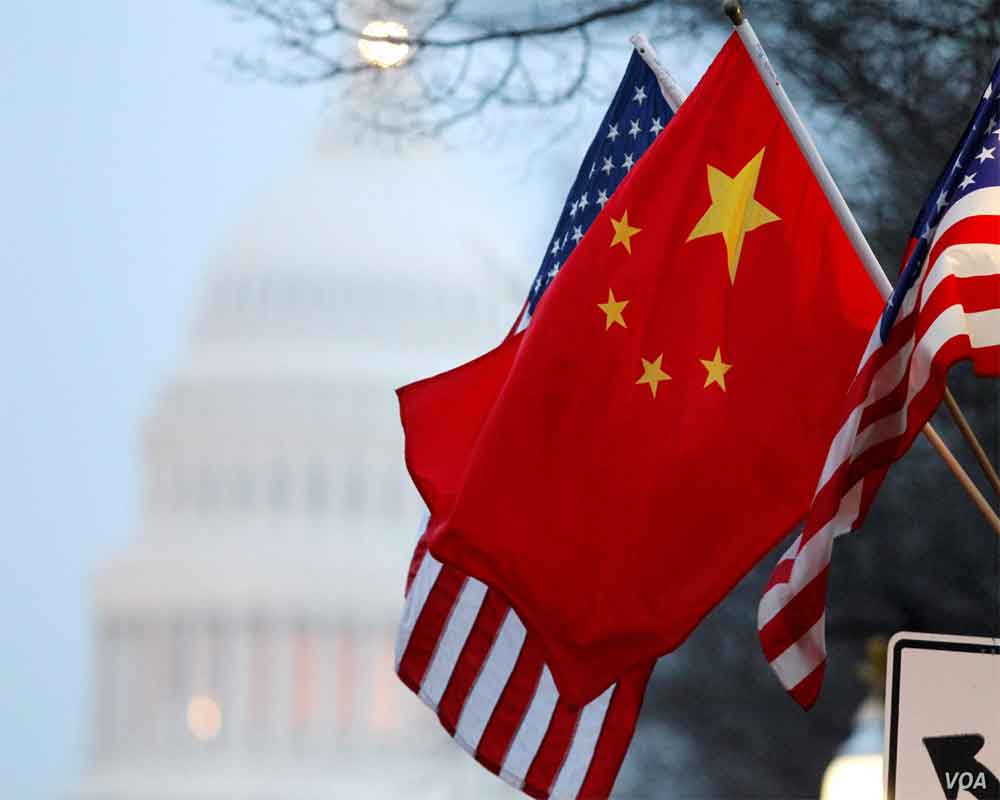US-China Trade Talks: Will Words Translate To Action? Market Reaction To Be Crucial

Table of Contents
Historical Context of US-China Trade Relations
The relationship between the US and China has been a complex interplay of cooperation and conflict, particularly concerning trade. The US-China trade war, which escalated significantly in 2018, was preceded by years of simmering tensions over issues like intellectual property theft, forced technology transfer, and trade imbalances. The "Phase One" trade deal signed in 2020 provided some temporary relief, but many underlying issues remain unresolved. Key areas of contention have included:
- Tariffs: Imposition of tariffs on billions of dollars worth of goods, impacting both countries.
- Intellectual Property: Concerns over the theft of US intellectual property and forced technology transfer by Chinese companies.
- Trade Deficits: The persistent and substantial US trade deficit with China.
- State-Owned Enterprises: The role and influence of state-owned enterprises in the Chinese economy.
Bullet Points:
- The Phase One deal, while offering some tariff reductions, did little to address structural issues.
- Key players in past negotiations have included U.S. Trade Representatives and Chinese government officials.
- Past trade disputes significantly impacted global supply chains and consumer prices.
Current Status of US-China Trade Talks
Current US-China trade talks are characterized by a cautious optimism. While both sides express a desire to de-escalate tensions, significant hurdles remain. Recent statements from officials suggest ongoing discussions, but concrete progress remains elusive. Specific sticking points include:
Bullet Points:
- Agricultural Purchases: China's commitment to purchasing specific quantities of US agricultural products.
- Technology Standards: Disagreements over technology access and standards.
- Market Access: Increased market access for US companies in China.
- Subsidies and State-Owned Enterprises: Concerns over unfair competition due to Chinese government subsidies and the advantages enjoyed by state-owned enterprises.
Potential Market Reactions to Trade Outcomes
The market's response to US-China trade talks will depend heavily on the outcome. Several scenarios are possible:
Bullet Points:
- Positive Outcome (Comprehensive Agreement): A comprehensive agreement addressing key issues could lead to increased investor confidence, potentially boosting stock markets and commodity prices.
- Neutral Outcome (Partial Agreement): A partial agreement, addressing some but not all issues, might result in a muted market reaction, with limited impact on stock markets and commodity prices.
- Negative Outcome (Breakdown in Talks): A breakdown in talks could trigger significant market volatility, with potential declines in stock markets and increased commodity price uncertainty.
Specific sectors like technology and agriculture will be particularly sensitive to the outcome. Furthermore, the potential impact on inflation and interest rates should be carefully considered.
Analyzing Investor Sentiment and Market Indicators
Monitoring investor sentiment is crucial for understanding the market's interpretation of US-China trade developments. Key market indicators include:
Bullet Points:
- Currency Exchange Rates: Movements in the USD/CNY exchange rate can reflect investor confidence.
- Bond Yields: Changes in US Treasury bond yields can signal shifts in investor risk appetite.
- Stock Market Indices: Performance of major stock market indices (e.g., S&P 500, Shanghai Composite) directly reflects investor sentiment.
Analyzing news from reliable sources and following expert opinions are vital for assessing the situation. Utilizing reputable financial news outlets and economic forecasting firms will provide a more accurate picture.
US-China Trade Talks: Market Reaction Will Determine Success
The success or failure of US-China trade talks will ultimately be judged by the market's reaction. A positive market response will indicate that the agreements reached are seen as credible and beneficial. Conversely, a negative or uncertain reaction will suggest that the agreements fall short of expectations or lack the necessary substance for long-term stability. Monitoring market indicators and understanding investor sentiment are therefore paramount. Keep an eye on the US-China trade talks' impact on the market; understanding the market reaction to US-China trade negotiations is critical. Stay informed by regularly checking reputable financial news sources and economic analysis to stay ahead of the curve.

Featured Posts
-
 A Happy Gilmore Sequel Adam Sandlers Chance For A Comedy Masterpiece
May 12, 2025
A Happy Gilmore Sequel Adam Sandlers Chance For A Comedy Masterpiece
May 12, 2025 -
 Getting To Know Debbie Elliott
May 12, 2025
Getting To Know Debbie Elliott
May 12, 2025 -
 John Wick 5 Lionsgate Confirms Next Installment Addressing Keanu Reeves Fate
May 12, 2025
John Wick 5 Lionsgate Confirms Next Installment Addressing Keanu Reeves Fate
May 12, 2025 -
 Equipo Uruguayo De Karate Full Contact Solicita Apoyo Para El Mundial
May 12, 2025
Equipo Uruguayo De Karate Full Contact Solicita Apoyo Para El Mundial
May 12, 2025 -
 Aaron Judge Equals Babe Ruths Yankees Record A Historic Feat
May 12, 2025
Aaron Judge Equals Babe Ruths Yankees Record A Historic Feat
May 12, 2025
Latest Posts
-
 Indore Sizzles At 40 C Loo Warning Issued
May 13, 2025
Indore Sizzles At 40 C Loo Warning Issued
May 13, 2025 -
 Ob Avena Prva Kniga So Romski Narodni Prikazni
May 13, 2025
Ob Avena Prva Kniga So Romski Narodni Prikazni
May 13, 2025 -
 Romski Ba Ki Prva Kniga E Ob Avena
May 13, 2025
Romski Ba Ki Prva Kniga E Ob Avena
May 13, 2025 -
 Nova Kniga Romski Ba Ki
May 13, 2025
Nova Kniga Romski Ba Ki
May 13, 2025 -
 Romska Gromada Ukrayini Chiselnist Teritorialne Zoseredzhennya Ta Sotsialno Ekonomichni Aspekti
May 13, 2025
Romska Gromada Ukrayini Chiselnist Teritorialne Zoseredzhennya Ta Sotsialno Ekonomichni Aspekti
May 13, 2025
